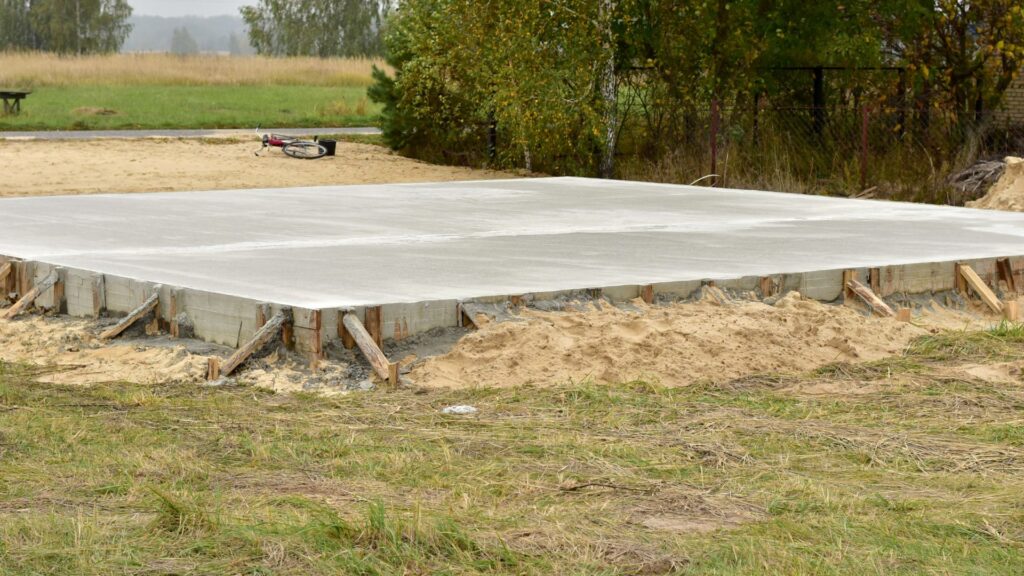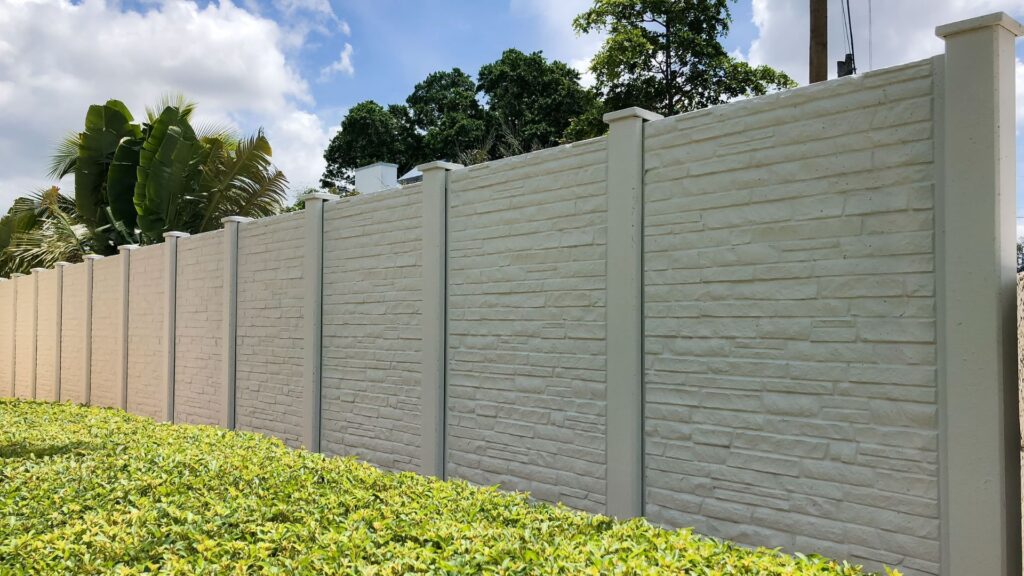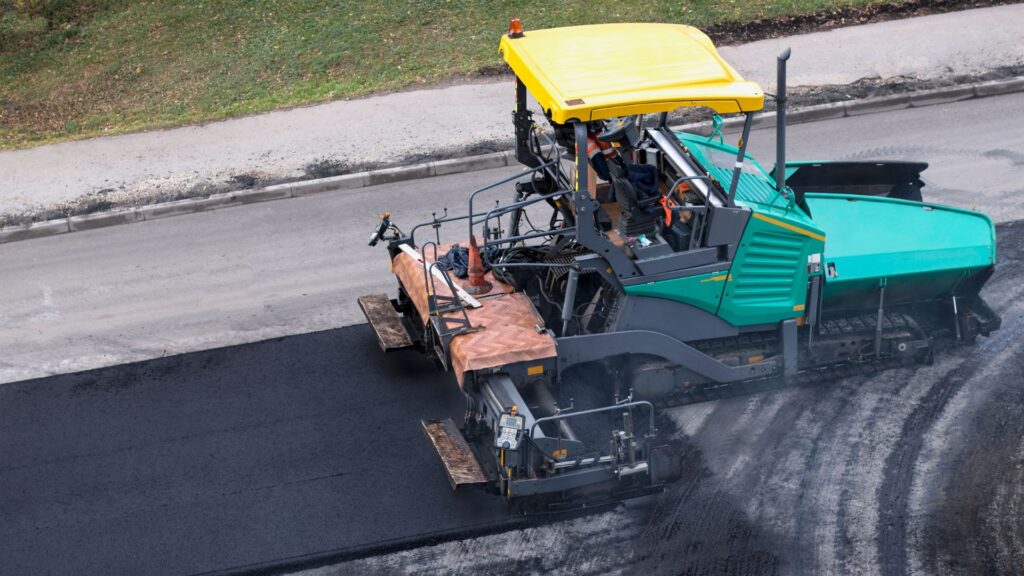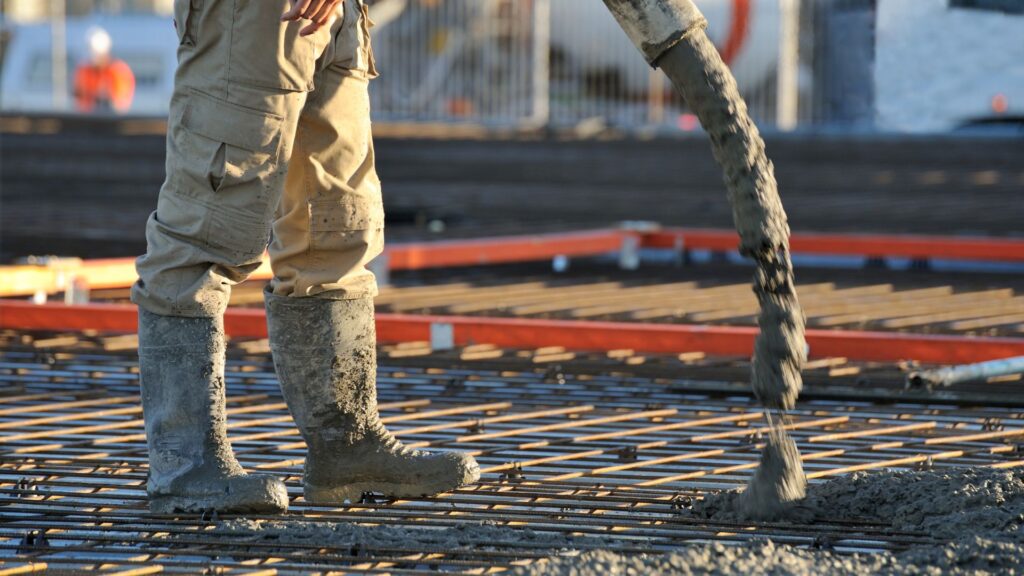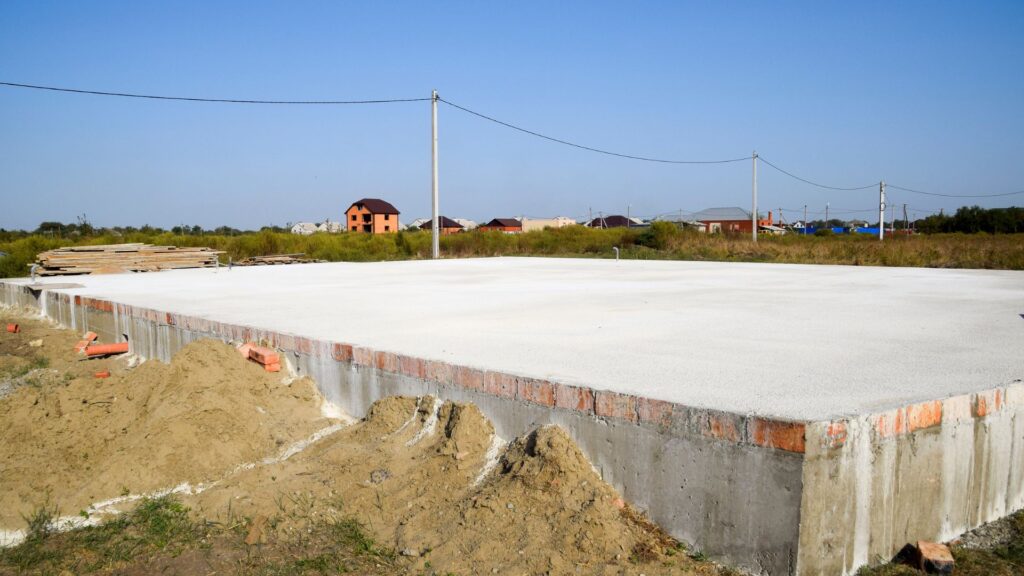Welcome to our ultimate guide on concrete slab foundations! If you’re planning to build a home or exploring foundation options, understanding the pros and cons of a concrete slab foundation is essential. This type of foundation is popular for its affordability, durability, and quick installation, but it also comes with certain challenges, such as potential cracking and limited insulation in colder climates. In this article, we’ll break down the advantages and disadvantages of a concrete slab foundation, helping you make an informed decision based on your budget, location, and long-term needs. Whether you’re a homeowner, a builder, or just curious about construction, this guide will provide the insights you need to determine if a concrete slab foundation is the right choice for your home.
A concrete slab foundation is a single-layer, thick slab of concrete poured directly onto the ground, offering a cost-effective and durable base for homes. Pros include affordability, quick installation, low maintenance, and resistance to pests and moisture. However, cons include susceptibility to cracking, difficulty in repairing plumbing, poor insulation in cold climates, and limited flexibility for renovations. Ideal for warm climates and stable soil conditions, a concrete slab foundation is a popular choice for homeowners looking for a budget-friendly and sturdy foundation.
- What Is A Concrete Slab Foundation?
- The Pros Of A Concrete Slab Foundation: Why Homeowners Choose It
- The Cons Of A Concrete Slab Foundation
- How To Decide If A Concrete Slab Foundation Is Right For You
- Consider Your Climate: Works Best In Warm, Stable Soil Conditions
- Evaluate Your Budget: Consider Upfront Costs And Long-Term Maintenance
- Think About Future Renovations: How A Slab Might Limit Changes
- Assess Local Building Regulations: Check Requirements Before Deciding
- Final Thoughts: Weigh Your Options Before Committing
- FAQs: About What Are The Pros And Cons Of A Concrete Slab Foundation?
- Conclusion
What Is A Concrete Slab Foundation?
When building a home, one of the most important decisions you’ll make is choosing the right foundation. A concrete slab foundation is one of the most common and cost-effective foundation types, especially in areas with warm climates and stable soil conditions. This type of foundation consists of a thick, solid slab of concrete that is poured directly onto the ground, serving as a strong and durable base for a structure. Unlike crawl spaces or basements, a concrete slab foundation eliminates the need for underground space, making it an efficient and low-maintenance option for homeowners.
How A Concrete Slab Foundation Is Built
Constructing a concrete slab foundation requires careful preparation to ensure long-term stability and durability. Here’s a step-by-step breakdown of the building process:
- Ground Preparation And Leveling – The first step in building a concrete slab foundation is to clear and level the construction site. This involves removing vegetation, debris, and any soft soil that could cause the foundation to shift over time. In some cases, builders may compact the soil to provide a more stable base.
- Adding A Gravel Base And Moisture Barrier – Once the ground is leveled, a layer of gravel is spread across the site. This gravel base helps with drainage and prevents water from accumulating under the slab. After this, a moisture barrier (such as a plastic or polyethylene sheet) is placed on top of the gravel to protect the concrete from ground moisture, reducing the risk of cracks and water damage.
- Pouring The Concrete And Reinforcing It With Steel Rods – The next step is to pour the concrete mix onto the prepared area. During this process, steel reinforcement bars (also known as rebar) or wire mesh are embedded within the concrete to increase strength and prevent cracking. Depending on the type of slab being built, additional reinforcements like post-tension cables may also be used. Once poured, the concrete is smoothed, leveled, and left to cure over several days.
Types Of Concrete Slab Foundations
Not all concrete slab foundations are the same—there are different types designed to suit various climates, soil conditions, and structural needs. Below are the three main types of concrete slab foundations:
1. Monolithic Slab Foundation
A monolithic slab foundation is the most common and budget-friendly type. The term “monolithic” means single pour, meaning the entire slab, including the foundation footing, is poured in one go. This method saves time and labor, making it a cost-effective choice for residential homes. Because of its simplicity, monolithic slabs work best in areas with stable soil and mild climates where ground movement is minimal.
2. Post-Tension Slab Foundation
A post-tension slab foundation is reinforced with steel cables that are tightened after the concrete has cured. This added tension enhances the slab’s strength, reducing the risk of cracking due to soil movement. This type of foundation is particularly useful in areas with expansive clay soil, where soil shifting and expansion can cause structural issues. Post-tension slabs are commonly used in modern home construction as they provide additional durability compared to traditional reinforced concrete slabs.
3. Floating Slab Foundation
A floating slab foundation is designed to “float” above the ground without being directly attached to footings. This type is often used in garages, sheds, and other detached structures but can also be applied in residential buildings under certain conditions. Floating slabs are ideal for areas where the soil expands and contracts due to seasonal changes, as they allow for slight movement without causing significant damage to the structure above.
A concrete slab foundation is a reliable and durable option for homeowners looking for a low-maintenance and cost-effective foundation type. Whether you’re building a new home or evaluating foundation choices, understanding how a concrete slab is constructed and the different types available can help you make an informed decision. By choosing the right foundation for your soil conditions and climate, you can ensure your home remains stable and strong for years to come.
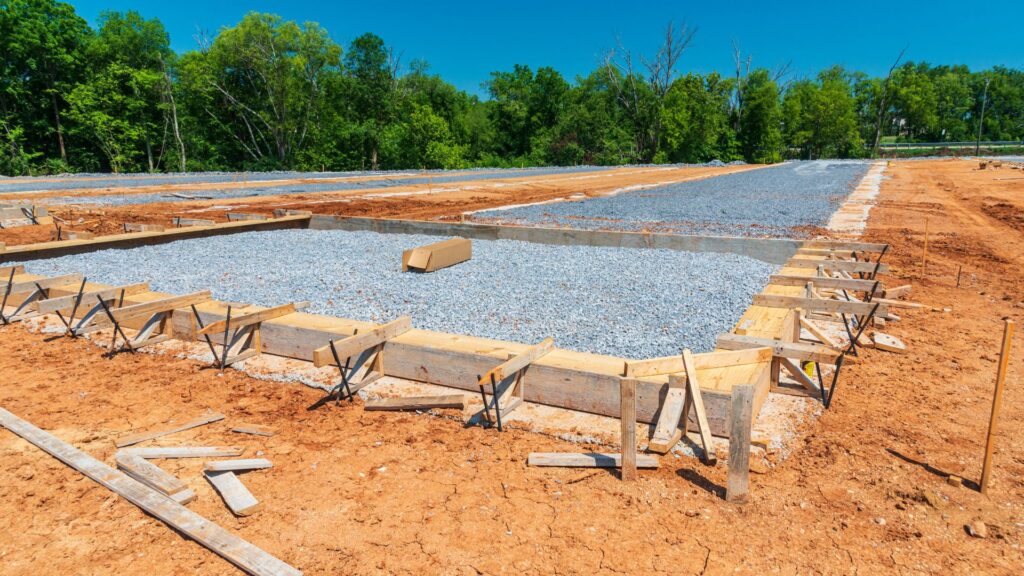
The Pros Of A Concrete Slab Foundation: Why Homeowners Choose It
When building a home, choosing the right foundation is a crucial decision that impacts your property’s longevity, maintenance, and overall cost. Among the various foundation types available, a concrete slab foundation stands out as a cost-effective, durable, and low-maintenance option. Whether you’re a first-time homebuyer or planning a new construction project, understanding the advantages of a concrete slab foundation can help you make an informed decision. Below, we explore the key benefits of this foundation type and why many homeowners prefer it.
Cost-Effective & Budget-Friendly
One of the biggest advantages of a concrete slab foundation is its affordability. Compared to crawl spaces and basement foundations, a slab foundation is significantly cheaper to install. Here’s why:
- Fewer Materials Required: Unlike basements or crawl spaces that require extensive excavation, support beams, and additional materials, a concrete slab foundation is simply poured onto a prepared site. This reduces the cost of materials like bricks, blocks, or wood framing.
- Lower Labor Costs: Because the installation process is relatively straightforward, labor costs are much lower. With fewer structural elements to construct, workers can complete the foundation in a shorter time, reducing expenses.
- Minimal Excavation Needed: Since a concrete slab foundation is laid directly on the ground, there is no need for deep digging. This eliminates costly excavation and soil reinforcement, further lowering expenses.
For homeowners looking to build on a budget, a concrete slab foundation is an excellent choice that provides structural integrity without breaking the bank.
Quick And Easy Installation
Time is money when it comes to construction, and a concrete slab foundation can be completed much faster than crawl space or basement foundations. If you’re looking for a hassle-free, time-efficient solution, this foundation type offers several benefits:
- Shorter Construction Timeline: A concrete slab can be poured and set in just a few days, depending on weather conditions. In contrast, basements and crawl spaces require more time for excavation, framing, and insulation.
- Fewer Steps Involved: Unlike a basement, which requires building walls, installing insulation, and waterproofing, a slab foundation only involves leveling the ground, adding a moisture barrier, and pouring the concrete.
- Minimal Weather Delays: Heavy rain or extreme weather can delay excavation projects, making crawl spaces and basements harder to build in certain seasons. A slab foundation reduces this risk since it can be poured quickly under favorable conditions.
For homeowners looking to move into their new home sooner rather than later, a concrete slab foundation is a practical and efficient choice that speeds up the construction timeline.
Energy Efficiency & Temperature Regulation
If energy savings and temperature control are priorities for your home, a concrete slab foundation provides some surprising benefits:
- Thermal Mass Effect: Concrete naturally absorbs and retains heat during the day, slowly releasing it at night. This helps stabilize indoor temperatures, reducing the need for excessive heating or cooling.
- Ideal For Warm Climates: In hot regions, a concrete slab helps keep homes cooler by absorbing heat from the ground. This can significantly reduce air conditioning costs in the summer.
- Works Well With Radiant Floor Heating: For homeowners who prefer warm floors in winter, a concrete slab is compatible with radiant heating systems. These systems circulate warm water through pipes embedded in the slab, providing consistent, energy-efficient warmth.
While concrete slabs may require extra insulation in colder climates, their natural thermal efficiency makes them an excellent choice for moderate and warm regions.
Low Maintenance & Durability
A concrete slab foundation is one of the most durable foundation types available, requiring very little maintenance over its lifetime. Here’s why:
- No Risk Of Termites Or Mold: Unlike crawl spaces, which have wooden support beams that can attract termites, mold, and rot, a concrete slab is solid and moisture-resistant. This eliminates common structural issues found in wood-based foundations.
- No Warping Or Shifting: Unlike wood or metal structures that may warp over time due to humidity and temperature changes, concrete remains stable and resistant to environmental damage.
- Long Lifespan: A well-constructed concrete slab foundation can last 50 to 100 years with minimal upkeep. It doesn’t require ongoing inspections or maintenance like crawl spaces, which may need venting and moisture control solutions.
For homeowners seeking a long-lasting and low-maintenance foundation, concrete slabs provide unbeatable strength and stability.
Fewer Pest Problems
A major concern for homeowners is dealing with pest infestations, which can cause structural damage and create an unhealthy living environment. Fortunately, concrete slab foundations naturally deter pests due to their design:
- No Open Spaces Beneath The Home: Crawl spaces and basements can become a breeding ground for rodents, termites, cockroaches, and other pests. A concrete slab sits directly on the ground, eliminating hidden entry points where pests can nest.
- Prevents Moisture Buildup: Damp crawl spaces often attract termites, ants, and mold. A solid concrete slab prevents excess moisture from accumulating, making it an unattractive environment for pests.
- No Wood-To-Ground Contact: Homes built on crawl spaces or pier foundations often have wooden beams that connect directly to the soil, making them vulnerable to termite damage. A concrete slab eliminates this risk by creating a solid barrier between the home and the ground.
By reducing the risk of pest-related structural issues, homeowners can save money on pest control and prevent long-term damage.
Is A Concrete Slab Foundation Right For You?
While a concrete slab foundation offers affordability, quick installation, energy efficiency, durability, and pest resistance, it’s essential to consider your location, climate, and long-term needs. This foundation type is ideal for warm climates with stable soil conditions, but it may require additional insulation in colder regions.
If you’re considering building a new home or evaluating foundation options, consulting with a professional contractor can help determine the best choice for your property. A strong foundation is the key to a strong home—make sure you choose the right one!
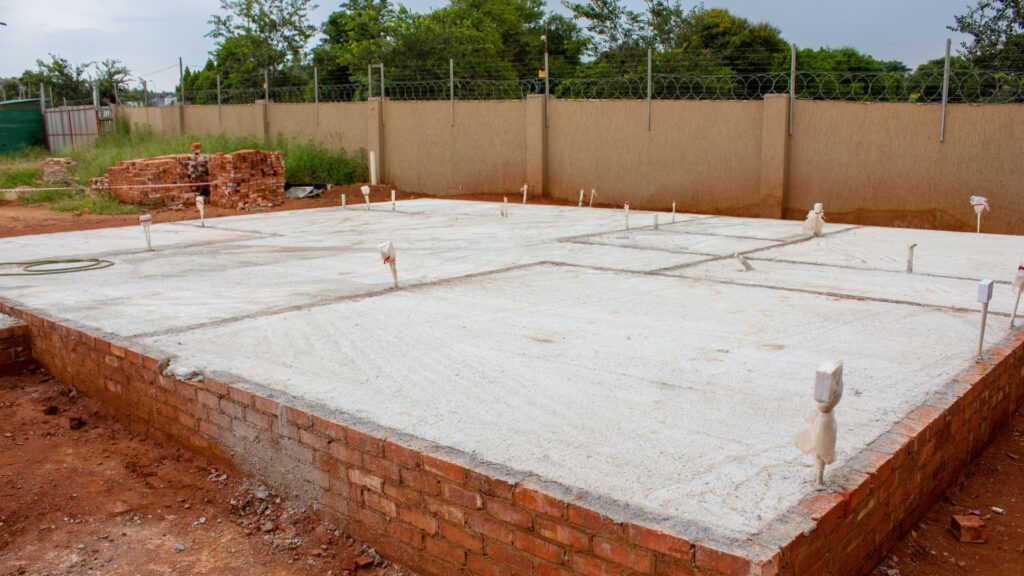
The Cons Of A Concrete Slab Foundation
While a concrete slab foundation offers many benefits, it also has some drawbacks that homeowners should consider before making a decision. From potential cracking to insulation challenges, understanding these issues can help you determine whether this type of foundation is the right fit for your home. Let’s dive into the most common downsides of concrete slab foundations.
1. Potential For Cracking And Damage
- Soil Movement & Freeze-Thaw Cycles: Concrete is durable, but it isn’t immune to environmental factors. Changes in soil conditions—such as expansion and contraction due to moisture fluctuations—can create stress on the slab, leading to cracks over time. In colder regions, the freeze-thaw cycle can worsen this issue, causing the concrete to shift and break.
- Difficult To Repair Once Cracks Appear: Unlike a crawl space or basement, where structural issues can sometimes be addressed more easily, fixing cracks in a concrete slab foundation is complex and costly. If left unchecked, these cracks can compromise the integrity of the entire foundation, leading to further damage in the home’s structure.
2. Plumbing And Utility Challenges
- Pipes Are Embedded In The Concrete: One major downside of a concrete slab foundation is that water and sewer lines are placed directly within the concrete. While this setup protects the pipes from external damage, it also makes maintenance much more difficult.
- Leaks Require Breaking Through The Slab: If a pipe starts leaking, accessing it can be a labor-intensive and expensive process. Plumbers often have to break through the slab using jackhammers, increasing repair costs and potentially leading to structural disruptions. Homeowners in areas with shifting soil should be especially cautious, as ground movement can put extra stress on these pipes.
3. Poor Insulation In Cold Climates
- Concrete Slabs Can Feel Cold In Winter: Unlike a crawl space or basement, a concrete slab foundation sits directly on the ground, making it more susceptible to temperature fluctuations. During the winter months, the cold ground can cause the slab to absorb and retain lower temperatures, leading to chilly floors inside the home.
- Homes In Cold Areas May Need Extra Insulation: In regions with harsh winters, additional insulation or radiant heating systems may be necessary to keep indoor spaces comfortable. Without proper insulation, heating costs can rise significantly as homeowners try to compensate for the cold seeping through the floor.
4. Limited Design Flexibility
- Harder To Remodel Or Add New Plumbing/Electrical Lines: If you’re planning to expand your home in the future, a concrete slab foundation may not be the best choice. Since the plumbing and electrical systems are embedded in the concrete, making modifications can be difficult and costly.
- Not Ideal For Homeowners Who May Want To Expand In The Future: Adding an extra bathroom or redesigning a kitchen could require breaking through the slab, which can be both disruptive and expensive. For those who anticipate remodeling their home down the line, a basement or crawl space foundation may provide more flexibility.
5. Potential For Flooding Issues
- If Built In A Low-Lying Area, Slab Foundations Are More Susceptible To Flooding: Homes with slab foundations sit closer to the ground, which makes them more vulnerable to flooding in areas with heavy rainfall or poor drainage. Unlike a raised foundation that allows water to flow underneath, a slab can trap moisture, leading to water damage and mold growth.
- Proper Drainage Is Crucial: To minimize flood risks, homeowners should ensure proper grading, install effective drainage systems, and consider waterproofing treatments for added protection. If your home is in a flood-prone region, you may want to explore alternative foundation options.
While concrete slab foundations are cost-effective, durable, and low-maintenance, they do come with challenges that homeowners should carefully evaluate. Issues like cracking, plumbing difficulties, poor insulation, limited remodeling potential, and flood risks can impact long-term comfort and maintenance costs. Before committing to this type of foundation, consider your climate, future home improvement plans, and potential repair expenses.
If you’re still unsure whether a concrete slab foundation is the right choice for your home, consulting with a foundation expert can provide personalized recommendations based on your location and needs.
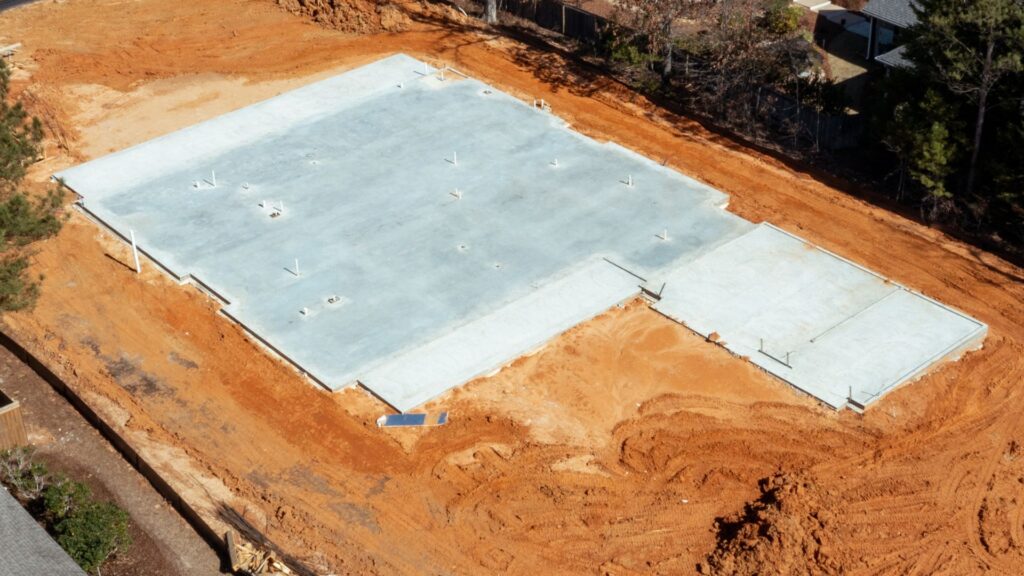
How To Decide If A Concrete Slab Foundation Is Right For You
Choosing the right foundation for your home is a crucial decision that impacts everything from structural stability to long-term maintenance. While a concrete slab foundation is an excellent option for many homeowners, it’s not the perfect fit for everyone. Before committing, it’s essential to consider key factors such as climate, budget, future renovation plans, and local building regulations. Below, we’ll break down each of these factors to help you make an informed choice.
Consider Your Climate: Works Best In Warm, Stable Soil Conditions
Your geographical location plays a significant role in determining whether a concrete slab foundation is suitable for your home. Slab foundations thrive in warm climates with stable soil conditions, making them popular in southern states and areas where freezing temperatures are rare.
In cold climates, concrete slabs can be prone to frost heave, where the ground expands and contracts due to freezing and thawing cycles. This movement can cause the foundation to crack or shift over time. If you live in a colder region, additional insulation or a frost-protected shallow foundation (FPSF) may be required to prevent damage.
The type of soil under your home is another critical factor. Expansive clay soils tend to shift with moisture changes, increasing the risk of cracks in a slab foundation. Conversely, well-draining sandy or gravelly soils provide better stability for a concrete slab. Before making a decision, consider having a soil test conducted to determine if your land is suitable for a slab foundation.
Evaluate Your Budget: Consider Upfront Costs And Long-Term Maintenance
A concrete slab foundation is often the most cost-effective option compared to crawl spaces or basements. It requires fewer materials, less labor, and shorter construction time, making it an attractive choice for homeowners on a budget. However, while the upfront cost is lower, it’s essential to think about long-term maintenance and repair expenses.
One significant concern with slab foundations is plumbing repairs. Since water and sewer lines are embedded within the concrete, accessing them for repairs or replacements can be costly and time-consuming. If a pipe leaks, the only way to fix it is to cut through the concrete, which can be both expensive and disruptive.
Additionally, crack prevention and maintenance should be factored into your budget. While small cracks are common, larger foundation shifts can lead to structural issues that require costly fixes. Investing in proper drainage solutions and routine inspections can help extend the lifespan of your concrete slab foundation.
Think About Future Renovations: How A Slab Might Limit Changes
Your long-term home plans should also influence your foundation choice. If you envision remodeling your home, adding new rooms, or reconfiguring plumbing and electrical systems, a slab foundation may limit your options.
Since plumbing and electrical lines are embedded within the concrete, relocating them can be difficult and expensive. If you plan to add new bathrooms, extend your kitchen, or make structural modifications, you might face higher renovation costs compared to homes with basements or crawl spaces.
Another potential limitation is flooring options. Concrete slabs are naturally hard and may require additional insulation or padding for comfort. If you plan on installing hardwood floors, keep in mind that moisture and temperature fluctuations can affect certain materials more than others.
On the other hand, if you’re building a starter home or a house you don’t plan to expand, a slab foundation can be a great low-maintenance option that serves your needs for many years.
Assess Local Building Regulations: Check Requirements Before Deciding
Before finalizing your decision, it’s crucial to check local building codes and zoning regulations regarding foundation types. Some areas require specific foundation designs based on factors such as climate, soil type, and flood risk.
For instance, if you live in an area prone to flooding or hurricanes, local building codes may mandate an elevated foundation instead of a slab to reduce water damage risk. Similarly, regions with earthquake activity may require additional reinforcement to ensure the slab can withstand seismic shifts.
It’s also helpful to research what foundation types are common in your area. If most homes around you have slab foundations, it’s a sign that they perform well in your region. However, if crawl spaces or basements are more prevalent, there may be valid reasons why homeowners prefer them.
Consulting with a local contractor or structural engineer can provide valuable insights into whether a concrete slab foundation is the right choice for your home. They can assess your property’s soil conditions, climate considerations, and long-term construction goals to ensure you make a well-informed decision.
Final Thoughts: Weigh Your Options Before Committing
Deciding on a concrete slab foundation requires careful consideration of various factors, including climate, budget, renovation plans, and local building regulations. While slab foundations offer affordability, durability, and low maintenance, they also come with limitations such as plumbing accessibility and insulation challenges.
By thoroughly evaluating these aspects and seeking professional advice, you can determine whether a concrete slab foundation is the best fit for your home and lifestyle.
Choosing the right foundation is a big decision! If you’re considering a concrete slab foundation and need expert advice, visit our website to explore our professional construction services. Whether you’re building a new home or evaluating foundation options, our team is here to help!
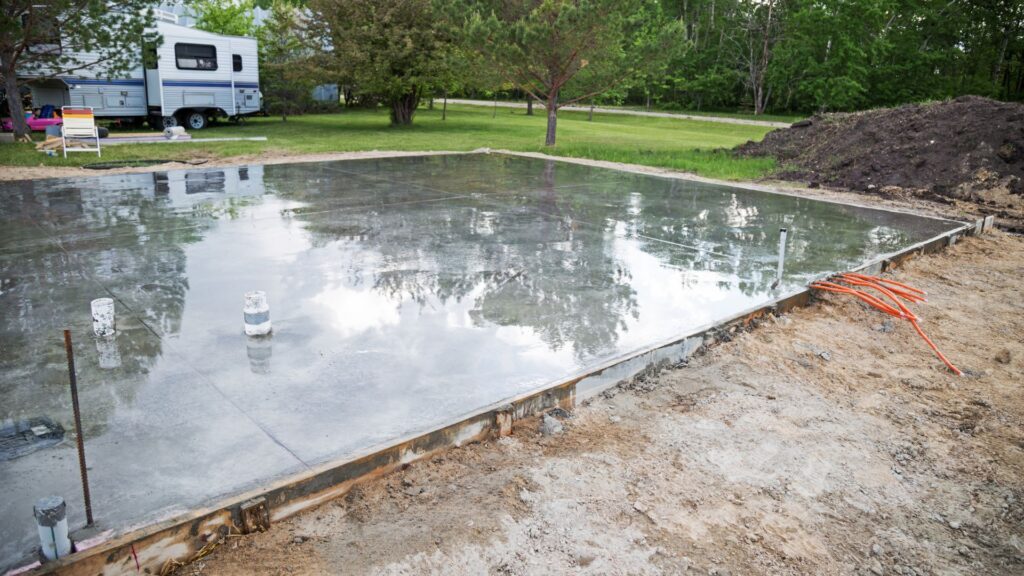
FAQs: About What Are The Pros And Cons Of A Concrete Slab Foundation?
A well-built concrete slab foundation can last 50 to 100 years or more with proper maintenance. Factors such as soil conditions, climate, and construction quality can impact its lifespan.
A concrete slab foundation is a flat, thick layer of concrete poured directly onto the ground to serve as the base of a home or building. It is commonly used in residential construction due to its cost-effectiveness, durability, and quick installation.
The key advantages of a concrete slab foundation include affordability, fast installation, low maintenance, resistance to pests, and durability. It eliminates the need for a crawl space or basement, reducing the risk of termite infestations and moisture-related issues.
Some drawbacks of a concrete slab foundation include susceptibility to cracking, difficulty in accessing plumbing and electrical lines for repairs, poor insulation in colder climates, and limited flexibility for future renovations or additions.
Yes, concrete slab foundations can develop cracks due to soil movement, temperature fluctuations, moisture changes, or improper installation. Using proper reinforcements like post-tension cables and expansion joints can help minimize cracking.
It depends on your location, budget, and needs. Concrete slab foundations are cheaper and easier to maintain but provide less insulation and access to utilities than crawl spaces or basements. Basements offer extra storage and living space, while crawl spaces provide ventilation and easier repairs for plumbing and electrical systems.
Concrete slabs are less ideal for cold climates since they can be affected by frost heave (expansion and contraction of frozen ground). Additional insulation and radiant heating systems can help improve comfort and prevent foundation issues in colder regions.
To maintain a concrete slab foundation, ensure proper drainage around your home, avoid excessive moisture buildup, monitor for cracks, and address any signs of shifting or settling early. Sealing cracks and using expansion joints can help prevent further damage.
Remodeling or expanding a home with a concrete slab foundation can be challenging since plumbing and electrical lines are embedded in the concrete. Adding new extensions may require additional foundation work, and moving plumbing lines can be expensive.
A concrete slab foundation is a great choice if you’re looking for a cost-effective, durable, and low-maintenance option, especially in warm climates with stable soil conditions. However, if you live in a cold region or plan to remodel in the future, other foundation types like crawl spaces or basements might be more suitable.
Conclusion
Choosing the right foundation for your home is a major decision, and a concrete slab foundation offers both advantages and challenges. On the plus side, it is affordable, quick to install, durable, pest-resistant, and low-maintenance, making it an attractive option for many homeowners. Without the need for crawl spaces or basements, it helps eliminate issues like mold, termite infestations, and excess moisture. However, drawbacks include susceptibility to cracking, costly plumbing repairs, poor insulation in colder climates, and limited flexibility for future renovations. The right foundation ultimately depends on factors such as your budget, climate, and long-term needs. If you live in a warm region with stable soil and are looking for a cost-effective, low-maintenance option, a concrete slab foundation could be ideal. However, if you’re in a colder climate or foresee major renovations, other options like crawl spaces or basements may be more suitable. Before making a decision, it’s best to consult with a professional contractor who can assess your property, local building codes, and future requirements to ensure you choose the most stable, long-lasting foundation for your home.
About the Author:
Mike Veail is a recognized digital marketing expert with over 6 years of experience in helping tradespeople and small businesses thrive online. A former quantity surveyor, Mike combines deep industry knowledge with hands-on expertise in SEO and Google Ads. His marketing strategies are tailored to the specific needs of the trades sector, helping businesses increase visibility and generate more leads through proven, ethical methods.
Mike has successfully partnered with numerous companies, establishing a track record of delivering measurable results. His work has been featured across various platforms that showcase his expertise in lead generation and online marketing for the trades sector.
Learn more about Mike's experience and services at https://theleadguy.online or follow him on social media:

